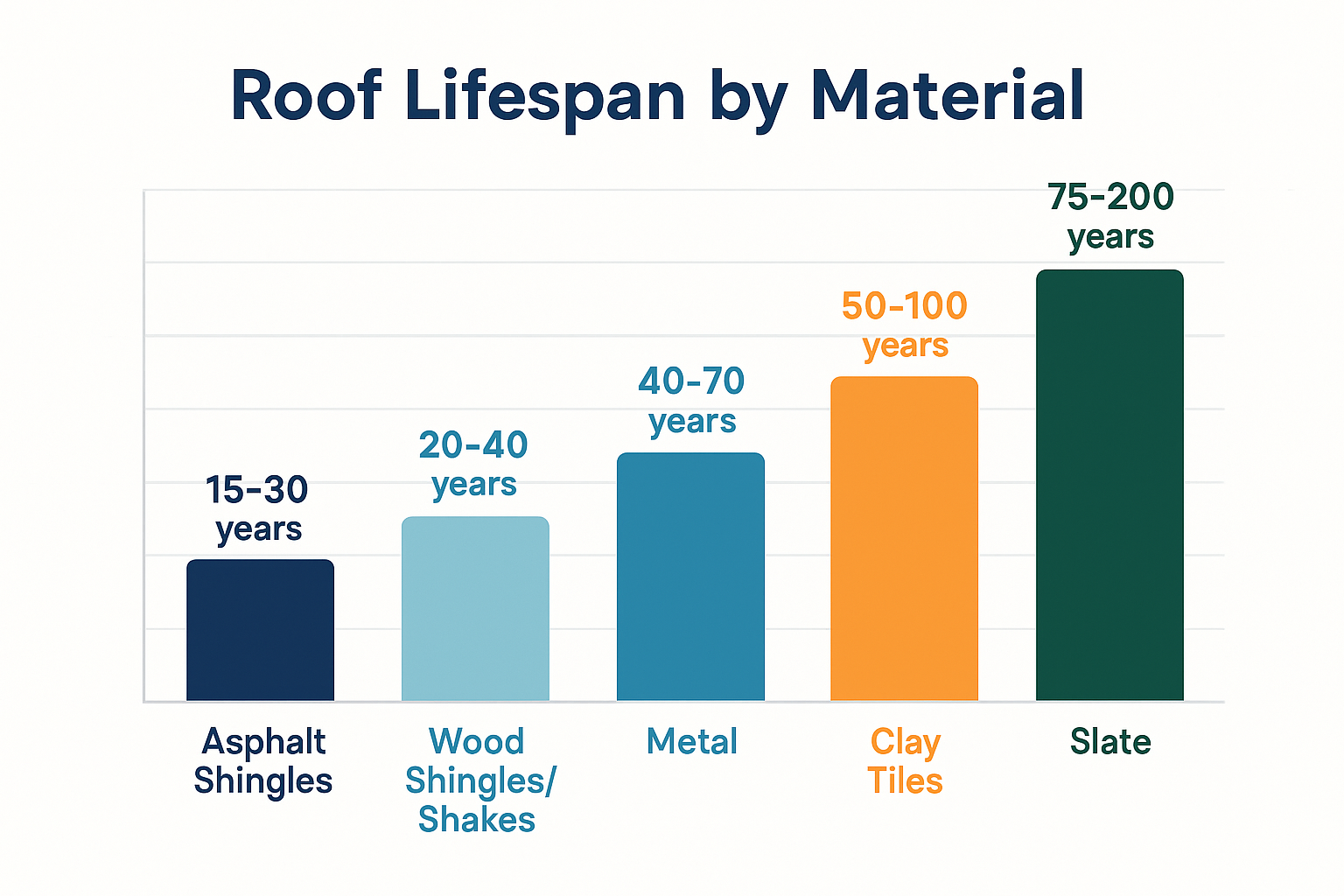
Your roof is one of the most important components of your home, protecting you from the elements and maintaining energy efficiency. Knowing how long different roofing materials typically last can help you plan for maintenance, repairs, and eventual replacement.
Average Lifespan of Common Roofing Materials
- Asphalt Shingles: 15 to 30 years. The most popular roofing material in the U.S., asphalt shingles are affordable and relatively easy to install. Lifespan varies based on shingle quality, climate, and installation. Regular maintenance like cleaning debris and inspections can help extend life.
- Metal Roofing: 40 to 70 years. Metal roofs (steel, aluminum, copper) are durable, fire-resistant, and energy-efficient. They withstand harsh weather well but require proper installation and occasional inspections to avoid rust or corrosion in some environments.
- Clay or Concrete Tile: 50 to 100 years. Tile roofs are heavy and long-lasting, with excellent resistance to fire and pests. They require strong roof framing due to weight, and periodic maintenance to replace broken tiles or fix mortar.
- Wood Shakes and Shingles: 20 to 40 years. Wood roofs offer natural beauty and insulation but are susceptible to rot, insect damage, and fire unless treated. Regular cleaning and inspections are critical to maximize lifespan.
- Slate Roofing: 75 to 200+ years. Slate is a premium roofing material prized for beauty and extreme durability. It's one of the longest-lasting options, but installation costs are high and specialized contractors are required.
Factors That Affect Roof Lifespan
The estimated lifespans above are averages. Actual roof longevity depends on many factors including:
- Quality of Installation: Proper installation by experienced professionals ensures the roof performs as intended.
- Climate and Weather: Extreme sun, heavy rains, hail, or snow can shorten a roof's life.
- Maintenance and Inspections: Timely repairs, cleaning gutters, and removing debris prevent damage.
- Ventilation and Insulation: Good attic airflow reduces heat buildup and moisture that can damage roofing materials.
- Roof Pitch and Design: Steeper roofs shed water better; flat roofs may have drainage issues.
Signs It's Time to Replace Your Roof
Even well-maintained roofs eventually reach the end of their lifespan. Watch for:
- Curling, cracked, or missing shingles
- Leaks or water stains inside your home
- Granule loss on asphalt shingles (check gutters)
- Visible sagging or uneven roof deck
- Moss or algae growth causing decay
If you notice these signs, consult a trusted roofing contractor for an inspection and quote.
Conclusion
Understanding the expected lifespan of your roofing material helps you budget for future maintenance and replacement costs. Regular inspections and upkeep can significantly extend your roof's useful life, saving you money and protecting your home.
Find Local Roofers